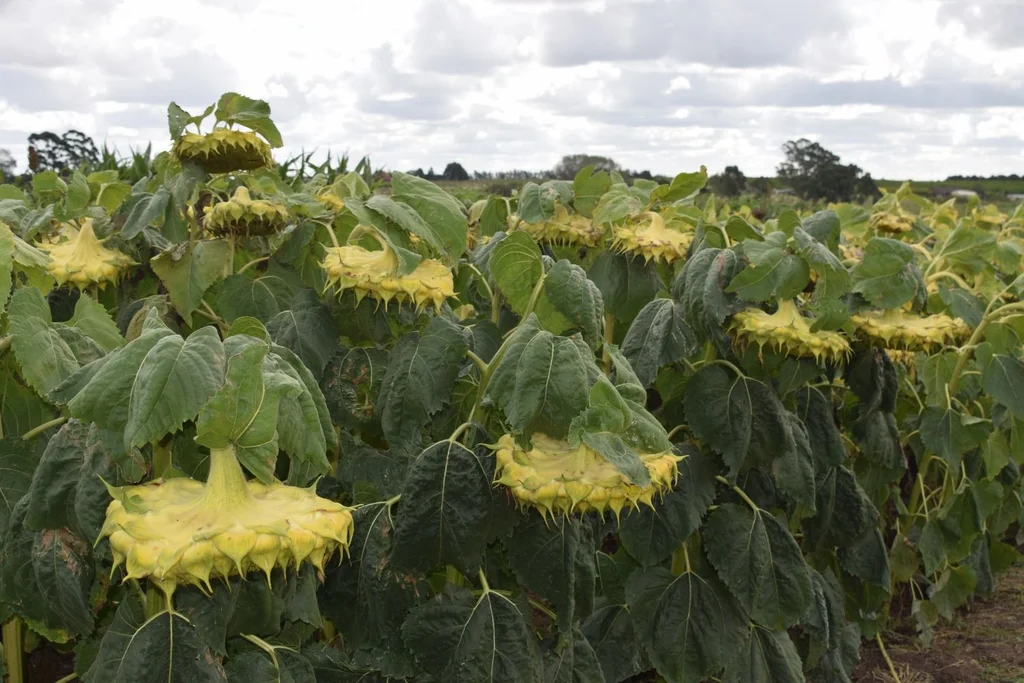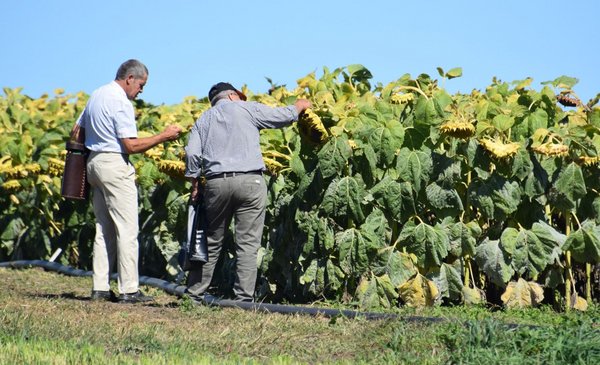The sunflower harvest is almost overit remains to carry out this work in a few farms to the south of the Negro River -where there were second and late sowings-, with a satisfactory primary balance considering how the weather behaved during the production cycle and the yields and quality obtained.
“We are seeing the sunflower with good eyes, everything is given so that the area continues to grow”, considered Juan Manuel GarcíaVice President of Copagran.
In 2021/22 the area that was made by Copagran producers grew 120%going from 3,400 hectares –representing 45% of the national area– to just over 7,000 hectares.
Regarding what may happen to the area in 2022/23 with the sunflower area, it may grow again, but that “depends a lot on how the markets behave,” he admitted.
He recalled that Copagran activated this bet on the sunflower four years ago, after the crop went from having a relevant area at the beginning of the century to almost disappearing, as a result of the spread of the phomopsis disease and the attack of birds.
“Soybeans were at US$300 per ton and we began to look for an alternative for summer cultivation, we tested in small areas to get rid of fears, we evaluated hybrids with genetics that had been advancing for 15 years, we tested new technologies in herbicides and we went looking for markets” , counted.
In 2020/21, a pilot production plan was put together for Cousa, with 10 thousand tons, which was fulfilled by Copagran and other suppliers. This year Copagran once again supplies the demand it had from Cousa, and since there was a productive surplus, it was also marketed to ALUR.
An unexpected opportunity?
Garcia stated that sunflower in Uruguay can continue gaining space, to the extent that the local industry demands it and especially if an international market emergeswhich may appear if the war in Europe spreads, bearing in mind that Ukraine is the main producer of sunflowers in the world and that the world supply of oils is in difficulty.
john samuel
The sunflower is slowly gaining area in the farms of Uruguay.
good oil levels
The results of the crops varied according to the area. To the north of the Negro River, where the water deficit was most severe, there were yields of 1,600 to 1,800 kilos per hectare.with very good quality, with very good oil content, a key factor in setting the price.
There were differences comparing achievements of hybrid sunflowers with others, not so much based on farm condition or management.
Oil contents higher than 48% and peaks of 57% were obtained in some hybrids.
In farms far to the north, in Salto and Artigas, there were lean yields, since the drought there was more intense, with 700 to 1,000 kilosalthough it is worth specifying that in this type of field at least there was production, which would not have been achieved this year with another crop.
South of the Río Negro higher yields were given, despite the fact that they were not farms that benefited greatly from the good rainfall that occurred since mid-January. Sunflower is a shorter cycle crop with an earlier critical period. The drought and the intense heat at the end of December and the beginning of January hit the crop, but they still from 2,000 to 2,300 kilos, with farms of 2,600 and up to 3,000 kilos per hectarealso with fat content above 48% and reaching 57%.
As well there were very good conditions for the harvestalmost everything was lifted prior to the rains in March that only complicated some second-class sunflowers and something that remains to be lifted in April.

john samuel
Sunflowers on the grounds of the National Expoactiva, in Soriano.
Attractive: US$700 per ton
The price of sunflower is set with the average price of soybeans in the Mercantile Chamber of Products of the Countryconsidering domestic market and export, based on 43% fat. From 43 to 47% bonus 2 points per percentage point above that and from 47% onwards point by point. If we take into account that the average was 52 to 53%the price of sunflower is subsidizing above 15%, and in the case of hybrids 18 and 19% above soybean, which yields prices above US$ 700 per ton.
García commented that it is a crop that It is not to replace soy, but a very good alternative. that this year with a climate that was not ideal allowed very interesting margins.
Besides, there are other comparative advantages. One is that it allows sowing at an intermediate date between early corn and first-class soybeans. Another is that it is harvested before the first-class soybeans and that allows the efficiency of machinery use to be maximized. It is also a crop that requires a little less investment than what happens in soybeans and corn.
For marginal fields and in dry years, it has a place in the rotation, it allows planting another species and varying the use of active ingredients in herbicidesGarcia concluded.

















